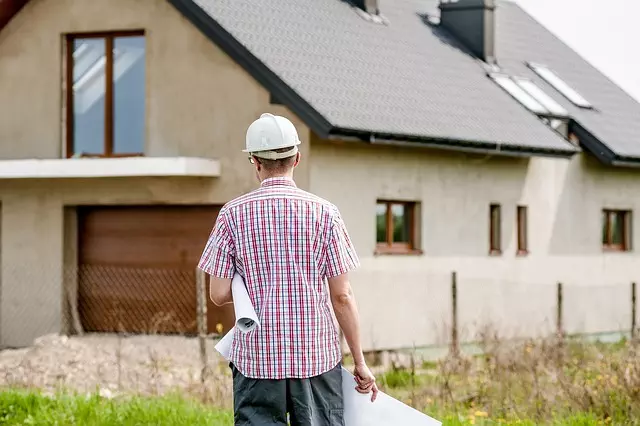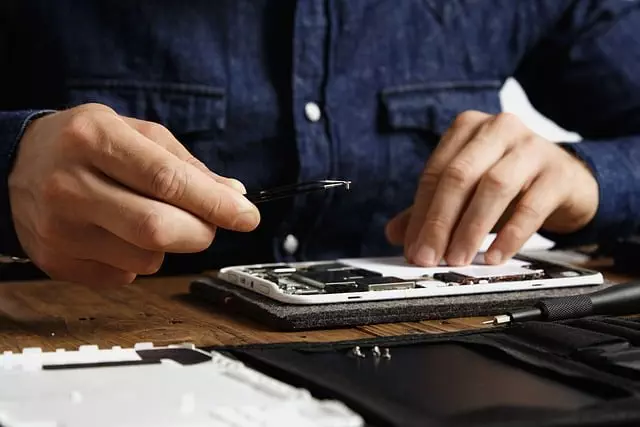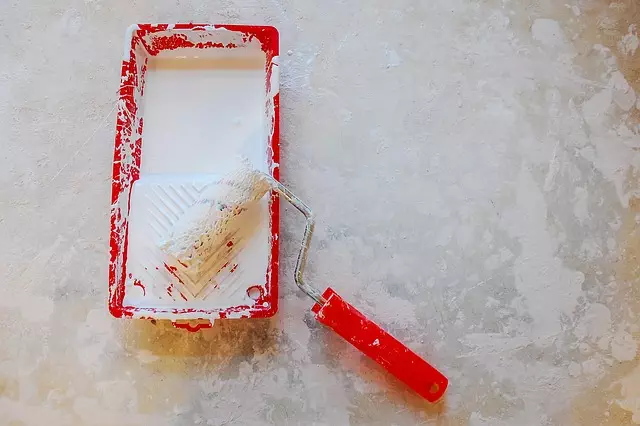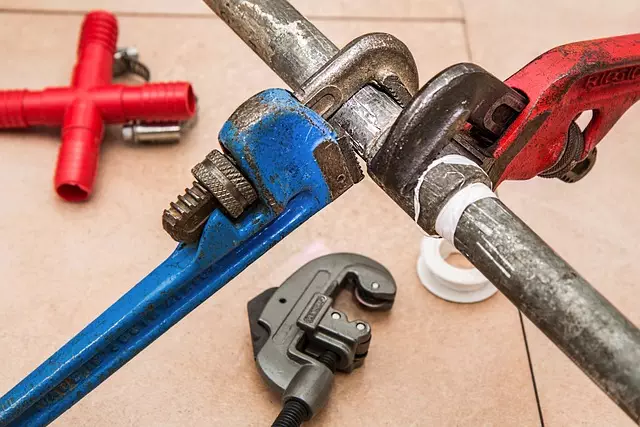Home repair and maintenance can be challenging, even for experienced DIYers, due to potential misuse of tools, underestimation of project scope, or omission of critical steps. To prevent minor issues from escalating into major disasters, it's crucial to recognize and address these pitfalls early on. Safety is non-negotiable when dealing with chemicals and power tools; ignoring safety protocols can lead to injuries or property damage. Homeowners should invest time in learning the best practices for home repair and maintenance, understanding materials, mastering tool usage, and knowing when a task is beyond typical DIY skills. Regular maintenance checks and ongoing education are vital for confident and competent project management. When issues arise, professional handymen methodically diagnose problems to provide precise solutions. They emphasize the importance of accurate measurements, correct tools, and materials for quality repairs. A leaky faucet, for instance, requires the right wrench and washers for a lasting fix. Detailed guides for home repair and maintenance, rich with visual aids, can transform DIY mishaps into professional-standard solutions. These resources simplify complex tasks into step-by-step processes, offering safe and effective ways to handle repairs without expensive professional help. It's essential to match your skills against the complexity of the job, acknowledging when professional intervention is necessary due to the risks involved, especially with electrical work, structural repairs, or complex plumbing issues. Always ensure that professionals with the right expertise and insurance handle such tasks to maintain both immediate safety and long-term functionality of your home.
Navigating home repair and maintenance can sometimes lead to unintended outcomes, with even the most well-intentioned DIY projects occasionally resulting in mishaps. This article delves into identifying frequent pitfalls of do-it-yourself endeavors, offering expert handyman tips for rectifying these errors, and providing detailed guides for achieving professional-grade fixes. Additionally, it outlines the prudent moments when calling a seasoned professional is the wisest course of action, ensuring your home remains safe and well-maintained.
- Identifying Common DIY Mishaps in Home Repair and Maintenance
- Expert Handyman Tips for Correcting DIY Gone Wrong
- Step-by-Step Guides to Professional-Quality Fixes After DIY Disasters
- When to Call a Professional: Knowing the Limits of DIY Home Repair and Maintenance
Identifying Common DIY Mishaps in Home Repair and Maintenance

When engaging in home repair and maintenance, even the most confident DIY enthusiasts can encounter mishaps. These common pitfalls often stem from a variety of factors such as improper tool usage, underestimating the scope of the project, or overlooking critical steps in the process. Identifying these issues early on is crucial for preventing minor problems from escalating into major disasters. For instance, homeowners frequently underestimate the complexity involved in tasks like rewiring a circuit or repairing a leaky pipe. This can lead to electrical hazards or water damage if not executed with precision and knowledge. Similarly, neglecting to follow safety protocols when handling chemicals or power tools can result in injury or property damage. It’s important for individuals undertaking DIY projects to educate themselves on the best practices within home repair and maintenance to avoid such mishaps. This includes understanding the materials they are working with, the correct use of equipment, and recognizing the signs of a job that has gone beyond the scope of typical DIY competence. By staying informed and prepared, homeowners can tackle repairs confidently, knowing the common failures to look out for and how to rectify them effectively. Regular maintenance checks and a commitment to learning from each project are key strategies in mastering home repair and maintenance tasks.
Expert Handyman Tips for Correcting DIY Gone Wrong

When a DIY project takes an unexpected turn, leading to a failure in home repair or maintenance, the expertise of a handyman can be invaluable. A seasoned handyman knows that the first step to correcting any DIY gone wrong is to assess the situation calmly and accurately. This involves identifying the root cause of the problem without rushing to immediate solutions. Understanding what went awry allows for targeted, effective repairs. For instance, if a paint job has led to unsightly drips and uneven coverage, a handyman would advise starting fresh by properly preparing the surface, selecting the correct type of paint, and applying it with even strokes. This attention to detail is crucial in ensuring that the repair not only fixes the immediate issue but also prevents similar problems from arising in the future.
Another common DIY mishap is improper installation or repair of fixtures, which can lead to leaks or structural weaknesses. A handyman’s tip for this would be to measure twice and cut once, ensuring precision in all measurements and installations. Additionally, they emphasize the importance of using the right tools and materials for the job at hand. For example, when fixing a leaky faucet, it’s important to have the correct wrench and washers to ensure a tight seal without causing further damage to the fixture. By adhering to these home repair and maintenance best practices, homeowners can confidently tackle issues that arise from their DIY endeavors, ensuring that their repairs are not only effective but also durable and aesthetically pleasing.
Step-by-Step Guides to Professional-Quality Fixes After DIY Disasters

When a do-it-yourself project goes awry, it can be disheartening to face the consequences of a botched repair or installation. However, with access to detailed step-by-step guides for home repair and maintenance, even the most daunting DIY disasters can be turned into professional-quality fixes. These comprehensive guides often include visual aids such as diagrams and videos, breaking down each task into manageable steps. Whether it’s a leaky faucet, a misaligned door, or an electrical hiccup, these resources provide the necessary instructions to rectify the issue safely and effectively. They cover a wide range of home repair scenarios, ensuring that homeowners can confidently tackle problems without the need for costly professional services. Each step is explained in clear, easy-to-follow language, with additional tips and tricks to help avoid common pitfalls. By leveraging these guides, homeowners can ensure that their repairs not only fix the immediate problem but also prevent future issues, maintaining the integrity and functionality of their homes. These guides are an invaluable tool for anyone looking to expand their home repair and maintenance skills, making them indispensable for achieving a well-maintained living space.
When to Call a Professional: Knowing the Limits of DIY Home Repair and Maintenance

When tackling home repair and maintenance tasks, it’s crucial to recognize the scope of your skills and the complexity of certain projects. DIY enthusiasts can often handle routine fixes like unclogging a toilet or patching a hole in the wall; however, more intricate issues such as electrical work, major structural repairs, or complex plumbing problems can quickly escalate beyond the realm of a typical homeowner’s capabilities. It’s not just about the risk of making the problem worse—though that is a significant concern—but also about safety and complying with local building codes. If you’re faced with a situation that requires specialized knowledge or tools, it’s time to call in a professional. They bring expertise, experience, and insurance coverage, ensuring that the job is completed safely and correctly. For instance, electrical systems must be handled by licensed electricians to avoid fire hazards and future complications. Similarly, significant plumbing issues or roof repairs after severe weather should be left to experts who can guarantee proper installation and longevity. By understanding the limits of your home repair and maintenance abilities, you can prevent costly mistakes and ensure the safety and integrity of your home.
When tackling home repair and maintenance, even the most enthusiastic do-it-yourselfers may encounter setbacks. This article has shed light on common DIY mishaps, providing a comprehensive guide to correcting these errors with expert handyman tips and step-by-step fixes. It’s crucial to recognize one’s limits; knowing when to call a professional is as vital as the repairs themselves. By understanding the distinctions between manageable tasks and those requiring specialized skills, homeowners can ensure their home repair and maintenance efforts are both safe and effective. Remember, a well-maintained home is a reflection of its inhabitants’ care and dedication, and with the right approach, any DIY failure can be transformed into a lasting solution.


